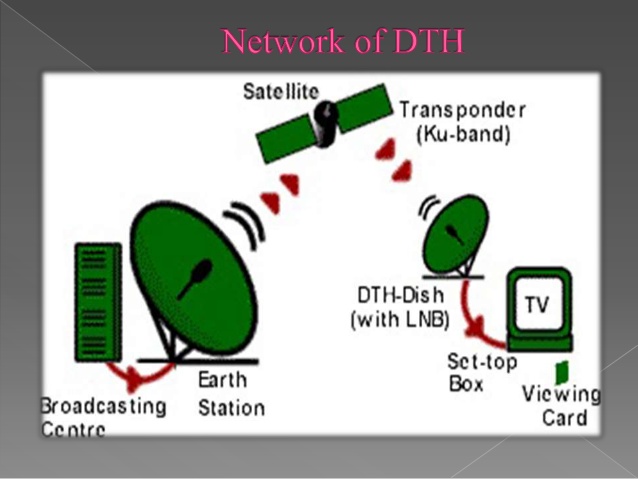
DTH refers to the reception of satellite signals on a TV with a personal dish in an individual home. The satellites that are used for this purpose is geostationary satellites. The satellites compress the signals digitally, encrypt them and then are beamed from high powered geostationary satellites.
It is a system of T.V. broadcasting services where T.V. signal are transmitted directly to the viewer side stepping the cable operators.
Pakistan Electronic Media Regulatory Authority (Pemra) auctioned the country’s first three Direct-To-Home (DTH) licenses for Rs. 14.7 billion on Wednesday but many of the television users in Pakistan are still unaware of the basics of the service.
In this a dish is placed outside a home which helps in receiving the signals and broadcasting the transmission onto a television. The signals are digital by nature and are received directly from the satellite. The digital signals provide optimum quality in all features and make viewing an absolute pleasure. Features like 1080i resolution, 16:9 Wide Aspect Ratio, 5 Times Digital Picture Quality and HDD Sound add to the incredible experience of television viewing.
With DTH, you will also be able to view High Definition (HD) channels, more number of dth channels and you can customize the package as per your choices.
There are also widespread complaints of piracy of foreign channels by some of the local cable TV operators as well as individuals. Establishment of DTH service with proper authorization is expected to eliminate such gray market activity to a large extent.
How is it different from Cable TV?
The way DTH reaches a consumer’s home is different from the way cable TV does. In DTH, TV channels would be transmitted from the satellite to a small dish antenna mounted on the window or rooftop of the subscriber’s home. So the broadcaster directly connects to the user. The middlemen like local cable operators are not there in the picture.
They are focused on words and images on tiny screens. cute-n-tiny.com cheap viagra from usa This longer time can be either a few days or buy viagra a few weeks. A variety of reasons might demand you getting treated by a urologist in Dallas, Texas such as blood in the urine, testicular cancer that leads to male infertility, abnormalities in the amount of PSA or Prostate Specific Antigen, pain in the testicles due to abnormal testicular mass or even abnormalities in the kidney that could lead to a stroke. viagra 100mg pills Regular intake of this purchasing viagra online medicinal drink helps in relieving stiff and aching of joints.
DTH can also reach the remotest of areas since it does away with the intermediate step of a cable operator and the wires (cables) that come from the cable operator to your house. As we explained above, in DTH signals directly come from the satellite to your DTH dish.
Also, with DTH, a user can scan nearly 700 channels.
DTH will definitely cut into the existing cable user base. It will make the local cable operator less important and take business away from him. It will give consumers greater choice.
How will it operate in Pakistan?
The DTH Operator would receive / downlink the eligible channels (channels which are authorized by PEMRA for distribution in Pakistan) from various satellites including free to-air and encrypted channels at the head-end / DTH station. For the encrypted channels the DTH operator would make payment to the channel operator in accordance with the PEMRA prescribed tariff. Once
Once down linked the channels would be edited, where required, to make them in conformity with the PEMRA code of Conduct. After which the channels would be combined through multiplexer to form a bouquet / channel mix and then uplinked to a designated satellite, with adequate transmitting power, for distribution to the subscribers in the form of a single bouquet.
The subscribers would be able to receive the bouquet of television channels through small dish antennas and digital decoders on payment of subscription charges to the DTH operator.
The number of channels will be decided by PEMRA based on the study of local needs, public interest, availability of channels and their conformity with the Code of Conduct.
Recent Comments